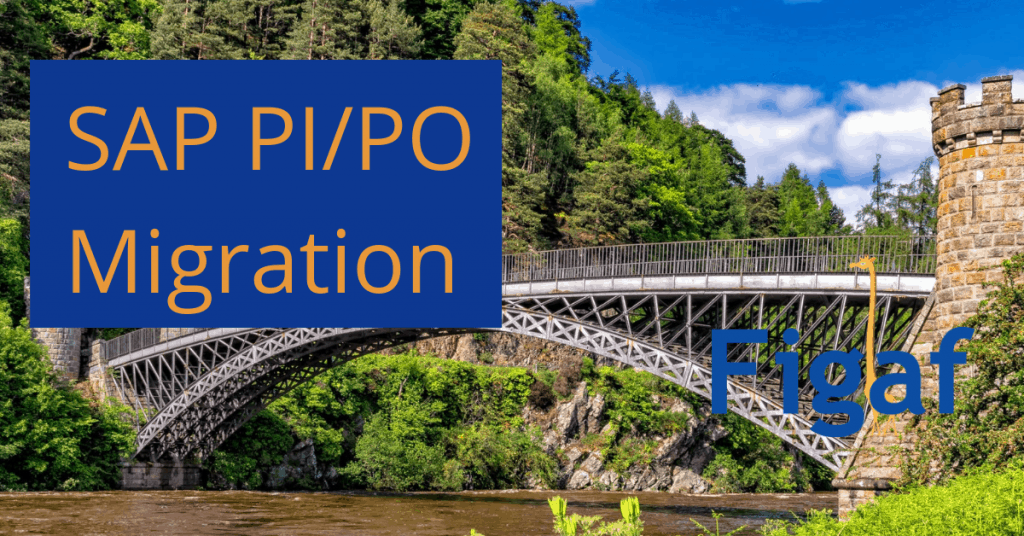There many companies working on migration or planning a migration of their SAP XI/PI to SAP PI/PO 7.5 systems. Over the years I have created a number of resources that make a lot of sense if you are in the process of considering a migration. Here is one place that you can find all my best resources on the topic.
Timeline
One of the drivers for migration is that the support of everything but 7.5 will end in December 2020. That is currently in 12 months time. Not a long time if you need to plan a project, get funding and running the upgrade. I would assume that the minimum time for a migration is 6 months once you got people working on the project. If you need to get the funding you know your companies budget process, so you better get started.
As I read the note 1648480 extended support will not be possible for the Java stack.
Options for upgrading
There are a number of options that you can use when upgrading your landscape. Product manager of PI/PO Alexander Bundschuh has written a list of the different options (13) that you have depending on where you are at the moment. What options for Upgrading SAP PI/PO
My recommendation is to go for a single stack system because the dual stack is not developed anymore. It will also improve your next upgrade because of a simpler architecture. You will have to covert your ABAP Mappings.

There is also the option to migrate to SAP CPI, which is the cloud-based tool for Process Integration. It has some areas where it can replace a PI and BPM solution, but there are patterns that are not fully optimal yet. It will no doubt be the place where SAP is focusing their development, so you will see a number of improvements there.
If you are not planning to use PO functions like B2B Add-on, BPM/BRM then it is probably best to keep at current license but move to an AEX, Java only version of your system. The only reason they would be to run CPI content on your PO system. If you have a few ccBPM probably consider moving them to CPI or Cloud Workflow.
If you are using B2B Add-on or want to run CPI content locally the PO is the way to go.
There is the concept Stack split that I have heard some customers use. The idea is to upgrade your 7.31 dual stack system to 7.5 with dual stack. In 7.5 they cannot share a system ID so one of the systems will get a new System ID. You will then be able to delete the ABAP system. So you only have a single stack system. It does require that you are using ICO’s for all your integration. I’m not sure if this is a supported process and how it works. Maybe your consultants know how it works.
If you go for an upgrade then we have written a good blog on the topic. You can read about how to plan your SAP PI/PO upgrade or patch here.
Outlook
SAP PI/PO 7.5 will be in maintenance until 2024. SAP has announced there will be a new version of SAP PI/PO in 2022. The goal of this version is to support a newer Java version and latest Databases. The release will depend on when drivers for databases and Java is availabe from vendors.
There is a roadmap for the SAP PI/PO you need to search for Process Orchestration and then login to see the roadmap.
From what I can see on the roadmap it does not look like BPM and BRM function will be improved. You probably need to find another solution for BPM process. It could be the SAP Cloud Platform Workflow or CPI that will allow you to run it. The place where you will see most development is on running CPI content on SAP PO.
Process
The process for migration is pretty simple. It is just something about planning what to do. It does make a lot of sense to get an understanding of how you want to migrate so you can get started and know how it will work. I think it will give you some information to start the migration from. It can be improved and need to be adapted to your model. There are two areas that you need to focus on.
- Planning: In this, you try to understand what you should be doing with regards to migration. This is where you need to figure out how to upgrade certain elements. This should be considered before you scale up the team. In this phase, you will also be able to see how you automate the solution.
- Execution: In this part is about making the migration as fast as possible and keep the risk low. Here is where you make a migration of a single interface, test it and then move it to production.
You can read the full post and see all slides and the replay at the link below.
Automation of the process
We have been making a lot of tools for the SAP Platform and they do make a lot of sense to apply in any migration project. The more you can automate the easier the process will be. Here are some of the things you can consider for your project.
Understanding your current integration
To understand what part of your current integration and message mappings, we have created a free tool that allows you to see what is going on. It can give you information about which message mappings you have used and how many times they have been executed in the last month. It can also give you information about which modules you have and how they are used. It is a free part of the Figaf IRT application so it is just to try it out, so you can plan your migration.
Seeburger Migration
If you have Seeburger and are considering what options you have for migration then we have a path for it. We have created an automated tool that can take your Seeburger Message mapping and convert it to a B2B Add-on mapping with a few click. You can then save many hours in the migration process. You just select which mapping you want to convert and which B2B structure you want to use. Then the application will take care of the rest. It will cost you a fixed fee per mapping.
You can read more on the application at Seeburger Migration tool or at how the seeburger migration works.
Testing your migration
If you are doing any upgrade or change of your landscape it is really useful to perform test to validate that it works correctly. I have in some cases seen that after an upgrade something on the mappings had changed behavior. It is, therefore, a good idea to be able to test that nothing is affected.
You have the following options to Test SAP PI.
- Manual testing requires a lot of resources
- SAP PIT a free tool from SAP to test from 7.5 sp14.
- Figaf IRT a tool build to make it a lot easier to test SAP PI/PO. Is our tool designed to make upgrade testing faster
Comparison of the two testing tools, I would recommend the Figaf tool because it makes the testing a lot faster to create and allow you to test your first upgrade. It also contains more patterns for testing and is able to test modules which is important with B2B Add-on.
Automation of the migration process
SAP has a tool that allows you to migrate channels and ICOs. It is a part of the PI system and you just link the two systems together and can then migrate scenarios or channels.
Figaf has developed a tool to automate your full SAP PI/PO Migration. It will take you to thu all the steps in the migration. So you can migrate individual scenarios fast and with correct testing in place. You can see a webinar presentation of the SAP PI/PO migration tool here.
Anything missing
Is there something missing let me know.
If you any questions on your migration, sent a email to [email protected].

